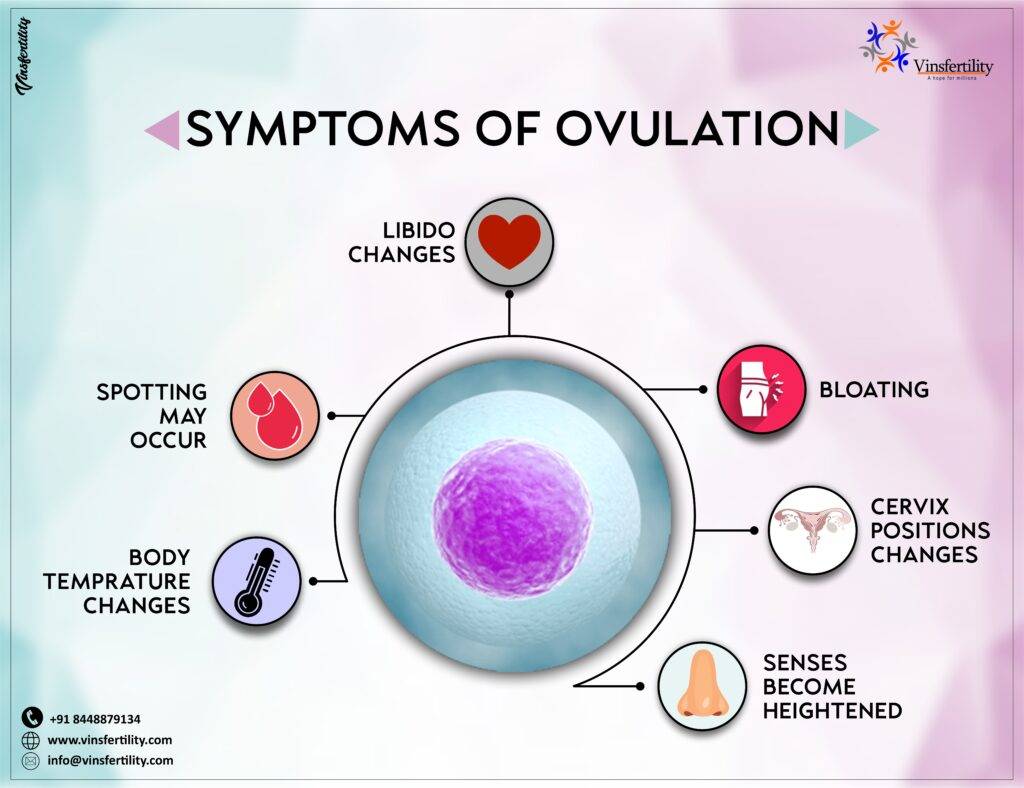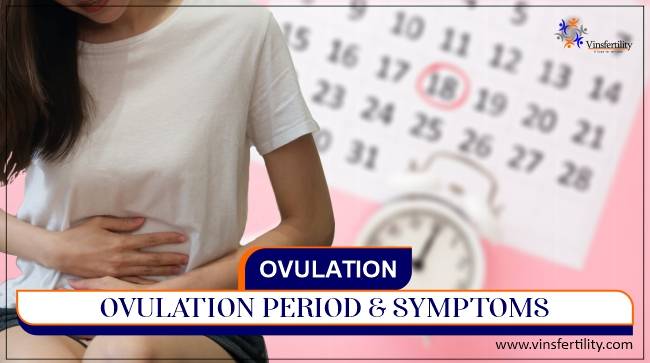Popular Searches
Ovulation Symptoms: 7 Signs of Ovulation
What is Ovulation?
Ovulation is a segment of your menstrual cycle. It happens when an egg is delivered from your ovary. After the egg is released, there can be chances that it may or may not be inseminated by sperm. If inseminated, the egg may move to the uterus and insert to evolve into a pregnancy. If left unfertilized, the egg explodes, and the uterine lining is shed during your menstrual cycle.
Ovulation Period:-
Those six or seven ovulation days are crucial because the egg can be fertilized for about twelve to twenty-four hours after it’s released. Plus, after sexual intercourse under the appropriate conditions, sperm can live inside the woman’s reproductive region for at least five days. The probability of getting pregnant is extreme when live sperm are available in the fallopian tubes during ovulation.
Generally speaking, during the twenty-eight days menstrual cycle, ovulation usually happens about fourteen days earlier than the beginning of the next menstrual cycle. But in many women, ovulation happens in the four days before or after the midpoint of the menstrual cycle. If you don’t have a perfect twenty-eight-day menstrual cycle like many women, you can determine the length and midst of your process by managing a menstrual calendar.

How to calculate ovulation period?
To evaluate your Fertile Window, one requires to discover what day she ovulates. To do this, you have to understand the length of your menstrual cycle, which tends to range from twenty-three to thirty-five days. To evaluate this – one should account for how many days have proceeded from the Day-1 of bleeding in your last menstrual cycle to the Day-1 of bleeding in your next. Now, from this number, subtract fourteen days from the end of your present cycle to find out the day you ovulate. If you have unbalanced menstrual cycles, or your cycle length differs month-wise, it will be tough to calculate your ovulation date. Ovulation urine examination may be beneficial, and one should think about additional advice from their fertility Specialist.
Various websites provide an ovulation calculator to calculate and find out your ovulation period. Just google it ‘Ovulation tracker’ or ‘Ovulation Chart’, and you will get them.
Ovulation Bleeding
Ovulation bleeding usually refers to bleeding that happens around ovulation, which is when the ovary produces an egg.
Ovulation bleeding is among many types of atypical vaginal bleeding. While bleeding associated with ovulation is generally harmless, it is vital to ensure no underlying medical cause behind the bleeding.
Some hallmarks of bleeding during ovulation include:
- The bleeding occurs throughout ovulation. On the whole, ovulation happens fourteen days following the last period started, even though several people ovulate earlier or later. People can have ovulation testing kits for basal body temperature to support in spotting the time of ovulation.
- The bleeding happens only once every month at around a similar time.
- The bleeding ceases on its own in a couple of days and is not painful.
Symptoms of Ovulation
Ovulation is as distinctive as the way menstrual cycles are for every female. By study to identity the pregnancy symptoms of ovulation day by day, it will be possible for you to time sex with your spouse accordingly to increase the probability of getting pregnant. A better knowledge of ovulation symptoms can give you a clearer idea of your menstrual cycle and assist you in spotting any abnormal ovulation symptoms down the line.
You are wondering what exactly happens during ovulation, which signs of ovulation to watch out for and how those ovulation symptoms might make you feel? Here are some symptoms to have the idea about your ovulation:-
1. Heightened Senses
For some females, a pretty sensitive sense of smell in the latter half of a standard menstruation period can be a symptom of ovulation. In this fertile stage, your body is prepared to be more enchanted by the male pheromone androstenone. Some females also talked about the increased sense of taste.
2. Libido Changes
A switch in libido is one more usual ovulation symptom. Some females observe that their sex drive escalates during ovulation, which might be a natural way to keep the species alive and well!
3. Cervical Mucus Changes
These changes are one of the ovulation symptoms you may encounter. When you come near ovulation time, your body releases more estrogen, resulting in cervical mucus becoming clear and stretchy, like egg white, which assists sperm to swim towards the eggs that are lettered out during ovulation. Cervical mucus changes occur in most females, but you have to know what you’re looking for. The level of cervical mucus and what it looks and feels like depend from woman to woman. To examine it for ovulation, place a washed finger into your vagina, separate some mucus, and then expand the secretion between your thumb and finger. If it’s adhesive and stretchy or very slippery and wet, that’s a positive sign which denotes that you are in a fertile phase.
4. Nausea and Headaches
Many women feel nausea and headache during their ovulation period. These are two feasible side effects one can think of while ovulating; it happens because of the change in their progesterone and estrogen levels.
5. Breast Soreness or Tenderness
Tender breasts or sore nipples can be another symptom of ovulation due to the sprint of hormones that enters your body just after and before ovulation. Some females will encounter this tenderness just before ovulation, while others may experience it just after it.
6. Changes in your basal body temperature
Changes in your basal body temperature can also be a symptom of ovulation, but you don’t need to sense it. It will leap during ovulation and keep rising during that time. Later, you will start to identify the patterns and recognize significant changes quickly by tracking your basal body temperature for some months. Comprehension, when you ovulate, is the solution to becoming pregnant; still, it can also provide you with hints about why you are immediately undergoing specific symptoms. When you recognize the symptoms of ovulation, you can prepare yourself in a better way.
7. Ovulation Pain
Ovulation pain is pelvic pain that some females have during ovulation. Ovulation is the segment of the menstrual period when an ovary delivers an egg. Ovulation commonly occurs about halfway between your periods. Lots of females have never had pain during ovulation. Others can feel mid-cycle ache each month. They can time and again recognize the pain that they are ovulating. Ovulation may influence more than forty percent of females who ovulate during their reproductive years, and it can impact them almost every month.
Which Hormone is Responsible For Ovulation?
Ovulation occurs under the influence of the Luteinizing hormone (LH). LH is one of the reproductive pituitary hormones that helps in egg development and gives hormonal activation, which results in ovulation and letting out the eggs from the ovary.
How many eggs are released during Ovulation ?
Usually, you ovulate a single egg each month. This is the only egg that pulls off through the complete ovulatory procedure. But the certainty is that many other eggs don’t pull off past that initial stage. Every cycle, maybe fifteen-twenty follicles are activated, but when they don’t mature, they get “reabsorbed.” This process is called “atresia.”
Doctors reckon that we lose up to a thousand added follicles per month, thanks to natural cell death. If count, that’s up to the one thousand twenty-one eggs you lost per month. It does not matter if you’re pregnant, on birth control, or otherwise not ovulating. And the amount which you lose every month increases as you get old.
The good thing is that egg freezing can use some of those otherwise “lost” eggs. The egg freezing procedure uses hormone medications to level up the action in your ovaries, persuading them to release multiple mature eggs rather than the standard one so that you can freeze or preserve them for future needs.
Ovulation Test Kit
An ovulation kit is a home test that examines your urine to let you know when you are most possibly to be fertile. When you get set to ovulate, it lets out an egg for fertilization and your body releases more luteinizing hormone (LH). This test kit checks the amount of this hormone. This test kit is also known as Ovulation Predictor Test.
Ovulation Kit Price
- “I-know ovulation test kit for women planning pregnancy” which has 5 stripes and comes in Multi-colour, will cost you 480 rupees.
- Inito Digital Ovulation Kit has 15 stripes in it and it costs 3,499 rupees.
How to use Ovulation kit?
- Be sure to analyse the commands of your certain ovulation predictor kit, since there may be little bit of distinction in how they work.
- Normally, nevertheless, an ovulation predictor kit advances with a bunch of test strips. Some OPKs introduce five tests, others with approx ten.
- You should set about using the tests about two days prior to the day you anticipate ovulating. If you are unsure when you ovulate, you can google an ovulation calculator or the chart. There are also fertility apps that will seek to guess when ovulation is possible to happen for you.
- If your cycles are uncertain, you should test according to the earliest and latest dates you’d contemplate to ovulate. It supports having a kit with numerous test strips if this is your circumstance.
- Ovulation predictor kits have two lines. One line is the control line. This just lets you know that the test was used appropriately and is working. The second line is the test line. When the test line is as dark as the control line, LH surges.
- This is when you should begin having baby-making sex.
- If you test for five days, you have an 80% of predicting ovulation. If you test for ten days, you have a 95% probability of speculating ovulation.
- Clearblue Easy Fertility Monitor works distinctively from consistency ovulation predictor kits. You are required to initiate testing on the first day of your period.
- Whatsoever ovulation test kit you opt for, make certain to read the instructions carefully for the best results.
Precautions after ovulation when trying to conceive:-
When you’re planning to get pregnant, you’re sure to know abruptly, if not precisely, when you are due to ovulate. You’re possibly also already aware that the adequate time to conceive is a few days before, the day that you ovulate, and the day after. This is because, odd as it may seem, sperm live longer in the body than your eggs, which only stay viable for around forty-eight hours. You naturally don’t want to ruin your prospects by doing the wrong things given this short window of opportunity.
Avoid Harmful Habits To Stay Healthy- To provide yourself the perfect opportunity of conceiving and sustaining a healthy pregnancy, it’s as crucial to steer clear of damaging habits as it is to have an adequate diet.
- Smoking not only harms your fertility, making it less presumably you will become pregnant. It can also heighten the threat of miscarriage.
- Caffeine in moderation is unlikely to be an issue during pregnancy. But, too much caffeine can a bit elevate the danger of miscarriage. It’s better to remain at a maximum of two hundred milligrams of caffeine a day.
- Avoid alcohol altogether as it creates substantial harm in the pretty rapid stages of fetal evaluation.
Nutrition before and during early pregnancy- When trying to conceive after ovulation, there are certain precautions you need to take care of while hoping for pregnancy. This is because good nutrition is a pretty crucial part of this.
- Leafy green vegetables that include – Kale, Cabbage, Brussels sprouts, broccoli, and Spring greens. These green leafy vegetables are sensibly good natural sources of folic acid.
- Milk, yogurt, and cheese are precious sources of protein and calcium. If the amount is low when you become pregnant, the required calcium is drained from your bones to unite the baby’s requirements, which could increase your threat of osteoporosis in the future.
- Wholemeal grains, vegetables, and fruits provide you with an abundance of fiber. This is better for your overall weight and health check because you feel complete for longer with these whole, instead of the processed foods. A study also stated that a diet high in fiber could lessen your threat of gestational diabetes.


